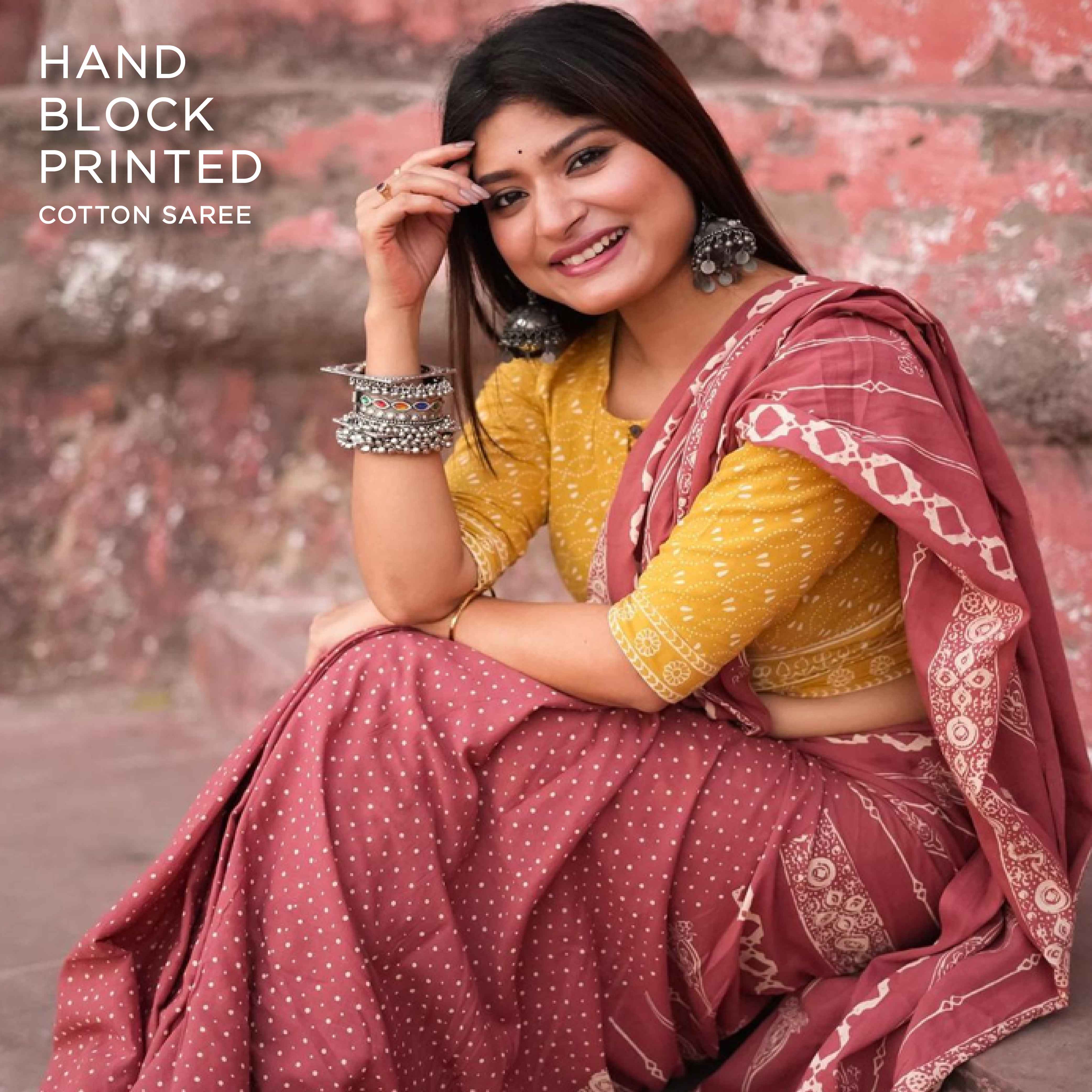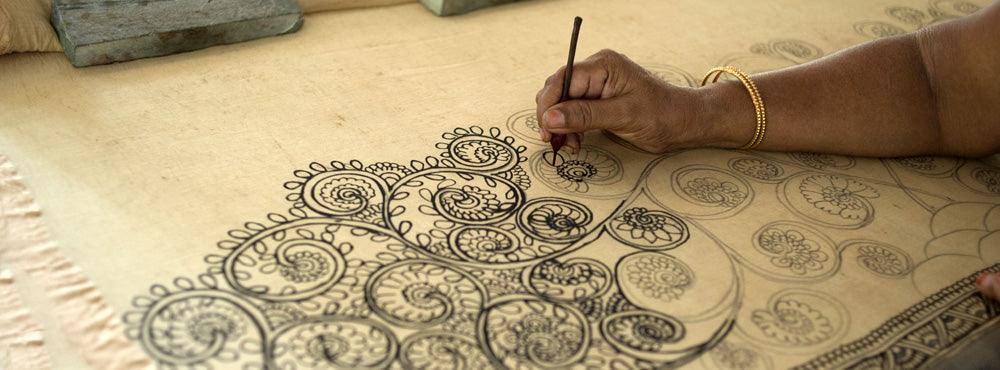Taking you on a voyage to a district headquarters of Dhar is the town Bagh in Madhya Pradesh. Famous among the tourist for its historical Bagh caves, it also has a rich livelihood of art and craft residing through the town of Baghini. This craft was found by the tribal Muslim printers on their expedition from Sindh to Manawar. At that time the print was hugely influenced by geometrical prints and floral compositions. A respite in between lead many traditional printers to adapt the livelihood of synthetic fabric production, and deserted the art. It was an artisan name Ismail Khatri, who withstand the evolving time and stay connected to the roots of block printing by staying in the Bagh village. He started experimenting with the designs, and with his ideas of bringing the block design to different kinds of fabric, he breathes a new life in this art residing in the small village of Bagh.

Bagh Printing Process
This printing process is carried out manually by a group of people in the Bagh village of Madhya Pradesh. Involving repeated washing, dyeing, and printing process. The first step begins with the overnight soaking of the fabric in water to remove shrinkage and other impurities. It is then dried under the sun for hours. The next step follows by dipping the fabric in the big container filled with a mixture of castor oil (Arandi ka tel), goat dung (Mengni), raw salt (Sanchura) and water. Processes by walking it through a wooden stick. The cloth is kept in the mixture for the whole night. The next day the soaked fabric is washed with water.
The whole process is repeated thrice to get rid of impurities and starch. In order to form a proper base for printing, the fabric is drenched and dyed in a mixture of Harad(Terminalia Chebula)
After achieving the desired base for the printing process, the dyed fabric is laid stretched on the table. The craftsman skillfully and patiently prints the intricate designs on the fabric through a block. The motifs are been printed in a linear pattern from one edge to another.
Once, the printing is done it is dried under the sun for 10-15 days and then taken to the Baghini river to washed in flowing water. The last step leads the fabric into the boiling mixture of floral and leaf extract in a copper vessel. This helps in color-fixing and fastening. Resulting in red, black, and white shining bright on the fabric. It is again washed and dried out in the sun.




The inspiration behind the motifs
The motifs and design used in the Bagh printing are hugely inspired by the ancient Bagh cave paintings. Blocks like- Maithir or Makkhi (Mushroom), Genda (Marigold), Keri (Mango), Leheriya (Waves), Saaj (Border),Tikoni (triangle), Nariyal Jaal (Inspired by Taj Mahal), Chakudi (rectangular), Dhaari (Border), Mitthu Boota (Parrot), and Jurvaria (Polka Dots)

A tribute to Ismail Sulaiman Khatri
A Bagh legend and the recipient of honorable awards like- Lifetime achievement awards for Handicraftsin 2013 and received the Shilp Guru Award, the highest award of the Indian Craftsmanship in 2010. Ismail Sulaiman Khatri moved to Bagh village in the 1950s and began practicing the craft which he learns and inherited from his father. When many artisans were leaving this age-old craft, Ismail Khatri stood with his head high and made it his pride and livelihood. He experimented with the craft and processed it in different fabrics with around 300-year-old traditional wooden blocks. Ismail Khatri filled the life in the printing process by introducing two main colors in Bagh printing-Red (from alizarin) and Black (from iron fillings). Apart from this, he contributed to rediscovering other colors in natural dye like green and yellow. It took time but success does embrace him and to date, making him one of the most renowned and respected craftsmen of India.







